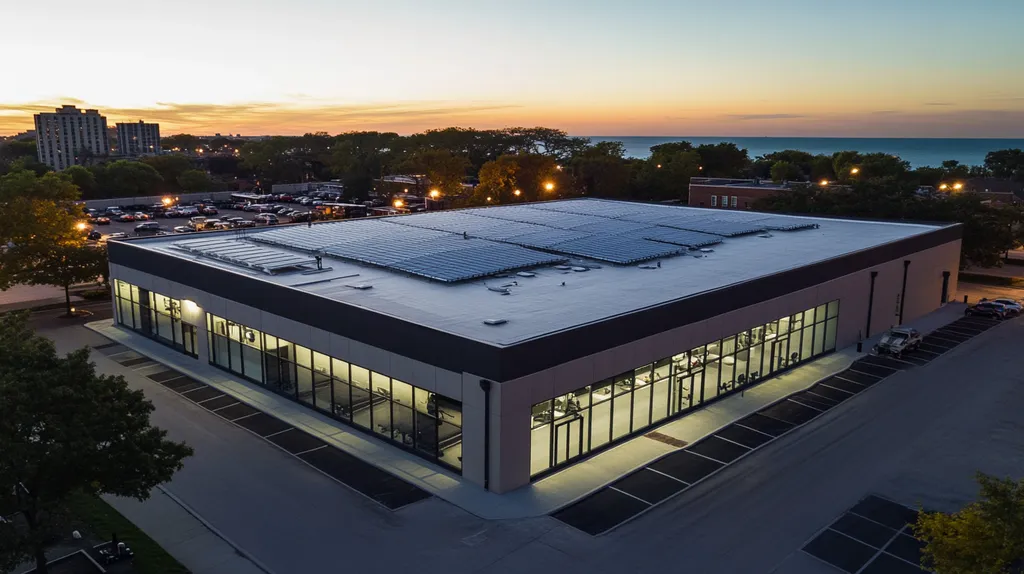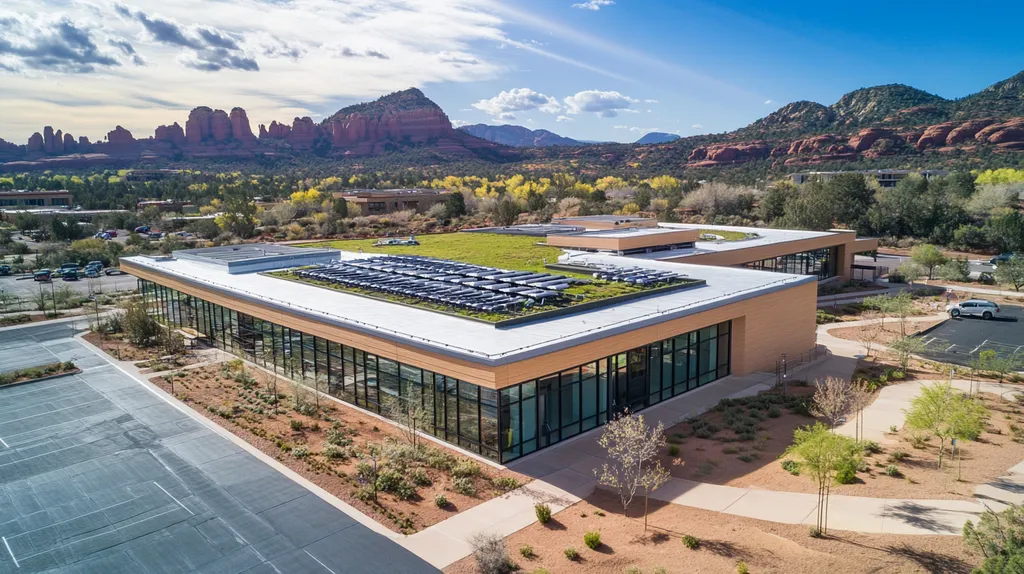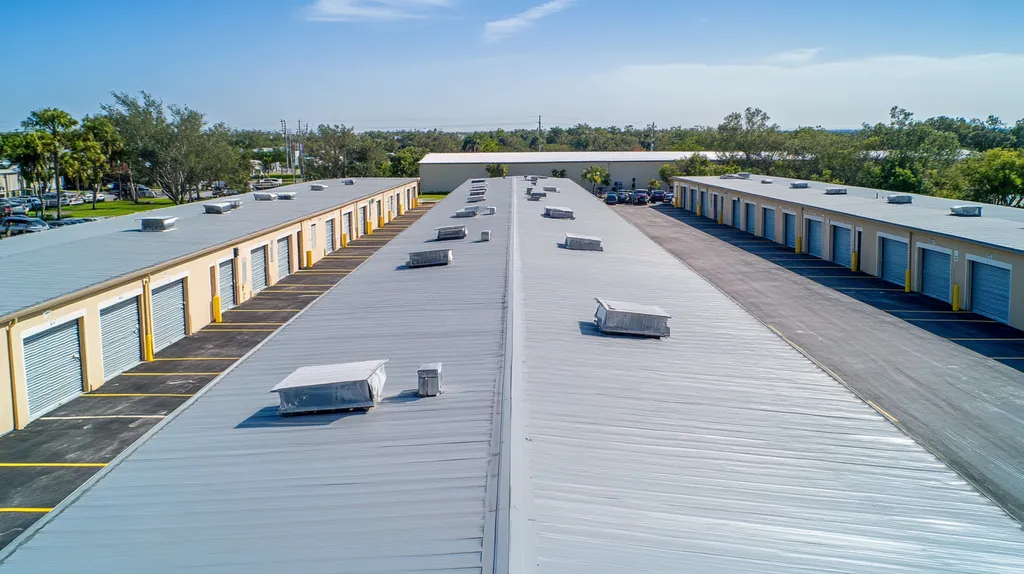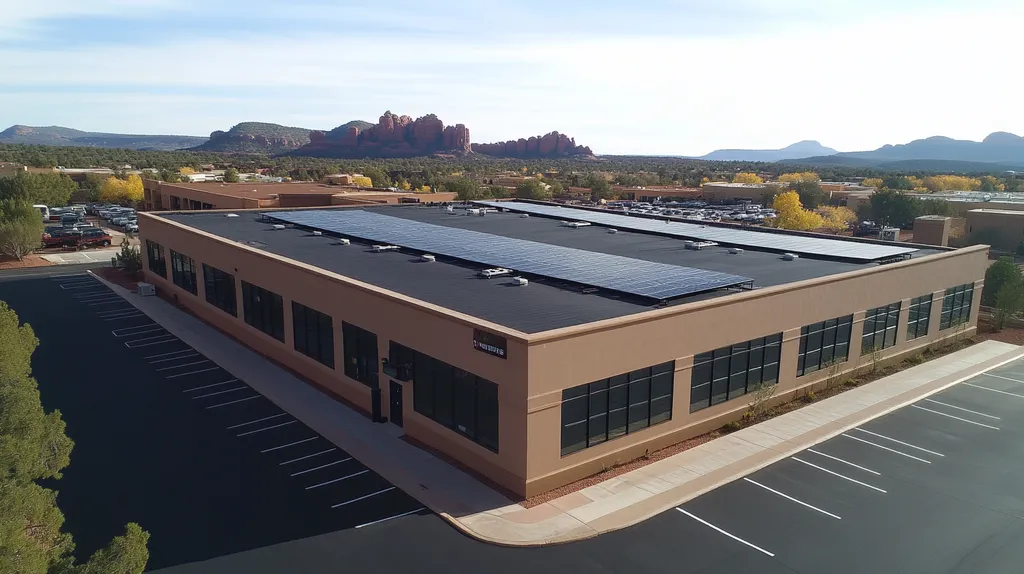Each year, industrial facilities spend over $3.2 billion on premature roof repairs, with studies showing that 40% of these costs stem from inadequate priming decisions. For facility managers, determining whether to prime a roof surface can mean the difference between a lasting installation and catastrophic failure.
The stakes are particularly high given that improper priming choices can void warranties and lead to complete system breakdown within 2-3 years of installation. This comprehensive guide provides facility managers with clear, actionable criteria for evaluating priming requirements across performance, financial, compliance, and operational factors.
By following this structured approach to priming decisions, managers can maximize roof longevity while protecting their facilities from costly failures.
SECTION 1: PERFORMANCE FACTORS
Applying a primer to industrial roofs is not just a routine step; it’s a critical decision that can influence the roof’s durability and future maintenance expenses. Studies show that nearly 20% of roof failures stem from improper surface preparation, highlighting the importance of a comprehensive evaluation. This section will delve into three essential performance factors: substrate compatibility, adhesion and durability testing, and climate resistance, equipping facility managers with the knowledge to make effective choices.
Substrate Compatibility Assessment
Choosing the right primer for the specific roof substrate is vital for ensuring top-notch performance. Industrial roofs can be made from a wide range of materials like metal, asphalt, or single-ply membranes, each requiring a unique primer formulation to achieve strong adhesion and prevent delamination.
A comprehensive compatibility assessment includes testing the chemical makeup and physical attributes of the substrate. For instance, metal roofs often need an etching primer for solid bonding, while asphalt surfaces may require a different approach. Misalignment in these selections can lead to early roof deterioration.
Facility managers should always refer to manufacturer guidelines and product data sheets for insights on necessary surface preparations that promote better primer adherence. Overlooking these instructions can greatly diminish the roof’s integrity.
Key Action Items
Adhesion and Durability Testing
Assessing adhesion and durability is crucial for predicting how long a primer will last under various conditions. If adhesion is lacking, the protective layers of the roof can fail, leading to leaks and structural concerns. Thus, it’s essential to perform tests that evaluate both initial and long-term adhesion properties.
Standard testing methods like peel tests and tensile adhesion tests measure the force needed to separate the primer from the substrate. These results provide valuable insights into how well the primer will perform under different stress levels.
Additionally, durability tests consider exposure to weathering, UV radiation, and temperature variations. These aspects are particularly important for roofs situated in extreme climates, as a primer that adheres well may not endure harsh sunlight without proper UV resistance.
Key Action Items
Climate and Weather Resistance
The effectiveness of an industrial roof primer is significantly influenced by its ability to endure the specific climate in which the building resides. Different areas face diverse environmental challenges, including extreme temperatures, significant moisture, and intense sunlight. Neglecting these climate factors when selecting a primer can lead to unexpected failures.
For instance, roofs in regions prone to heavy rainfall or snow require primers designed explicitly for moisture resistance. Conversely, roofs situated in hotter climates must utilize products that can withstand prolonged sun exposure without degrading. Understanding local weather trends is vital for facility managers in the primer selection process.
Modern primer formulations often come equipped with additives that boost their resistance to weather elements, such as UV stabilizers and moisture barriers. These enhancements not only protect the primer but also safeguard the underlying roofing materials, effectively extending the roof’s lifespan.
Key Action Items
SECTION 2: FINANCIAL CONSIDERATIONS
For facility managers, the challenge of balancing tight budgets with the need for reliable industrial roofs is ever-present. Overlooking the necessity for priming can result in expensive repairs and diminish property values. Conversely, a strategic approach to priming can extend the lifespan of roofs and improve overall performance. Grasping the financial implications of priming is essential for making sound decisions that support both budgetary needs and roof effectiveness.
Cost-Benefit Analysis of Priming
A thoughtful cost-benefit analysis is key to evaluating the financial practicality of priming industrial roofs. While the upfront costs for quality primers may appear high, these expenses often pale in comparison to the potential costs associated with roof failures. For example, inadequate adhesion can lead to leaks, resulting in repair bills that can escalate into the thousands.
In addition, applying the right primer enhances the adhesion of subsequent coatings, which significantly contributes to a roof’s longevity. By reducing the frequency of re-coating or replacements, organizations can save considerable amounts in the long run. Ultimately, recognizing the long-term advantages of proper priming helps prevent immediate costs and supports a sustainable roofing strategy.
Facility managers should also explore any possible tax incentives tied to maintaining high-quality roofing systems. Many regions incentivize investments in materials that promote energy efficiency, translating into immediate financial benefits through lowered utility costs.
Key Action Items
Budgeting for Primer and Coating
Effective budgeting for primer and coating involves a deep understanding of roofing materials and their costs. Facility managers must factor in both the initial outlay for primers and the long-term ramifications of subpar application. A clear cost breakdown should encompass material, labor, and any potential downtime.
During the budgeting process, it is vital to consider the appropriate primer for specific roofing substrates. For example, while elastomeric primers may come with higher initial costs, their superior sealing capabilities can significantly boost overall roof performance, making them a worthwhile investment.
Including contingencies in the budget can protect against unexpected expenses tied to roof preparation or repairs. Setting aside funds for additional labor or substrate remediation as needed helps ensure that the project remains on schedule without sacrificing quality.
Key Action Items
Long-Term Cost Savings Evaluation
Examining long-term cost savings from appropriate priming goes beyond immediate financial outlays; it takes into account the roof’s entire lifecycle. Studies show that investing in quality primers leads to decreased maintenance needs and reduced rates of roofing system failures.
For instance, roofs adequately treated with primer typically experience fewer leaks, resulting in lower repair costs and less disruption to business operations. Such reliability can yield significant savings over the years, validating the initial expenditure.
Furthermore, well-maintained roofs can improve a building’s energy efficiency by employing reflective coatings that minimize heat absorption. This can lead to lower energy bills, enhancing total financial savings. Some facility managers report energy reductions of up to 15% following proper priming and coating applications.
Finally, enhanced roofing performance boosts property value. Well-maintained roofs appeal to potential tenants or buyers, leading to improved financial health for facility owners. Long-term evaluations of these savings illustrate that the wise choice to invest in appropriate priming yields benefits well beyond initial costs.
Key Action Items
SECTION 3: COMPLIANCE REQUIREMENTS
Ensuring compliance with roofing specifications is a matter of urgency. Picking the wrong primer can result in adhesion failures, leading to leaks and costly repairs down the line. Studies indicate that around 30% of roofing problems arise from improper surface preparation. For facility managers, grasping compliance requirements is essential to avoid financial pitfalls and extend the lifespan of their roofs.
Manufacturer Specifications and Guidelines
Manufacturers outline clear specifications regarding the priming needs for their roofing systems. These guidelines detail necessary surfaces for priming and specify which types of primers to use. Ignoring these recommendations may void warranties and lead to improper applications that compromise performance.
It is essential that facility managers consider the compatibility between the primer and the roofing membrane. For example, specific membranes may require water-based primers, whereas others might call for solvent-based options. Closely consulting these manufacturer specifications ensures compliance and minimizes risks.
Adhering to manufacturer guidelines is vital not only for roof effectiveness but also for preventing costly rework that can delay project completion. Prioritizing these recommendations sets a strong foundation for successful roofing installations.
Key Action Items
Industry Standards and Certifications
Adhering to industry standards is crucial for compliant roof priming. Organizations like ASTM (American Society for Testing and Materials) set performance criteria that influence roofing materials and their installation. Understanding these standards can protect facility managers from compliance violations.
Certifications from reputable bodies, such as the International Code Council (ICC) or Underwriters Laboratories (UL), indicate that products have undergone rigorous testing for safety and performance. Using certified materials not only meets building codes but also demonstrates commitment to quality.
Moreover, many local building codes specify priming protocols based on climate conditions and roof types. Non-compliance can lead to fines and potential legal complications, making adherence essential for operational efficiency.
Key Action Items
Warranty and Liability Implications
Maintaining compliance directly affects warranties and liability. Most roofing warranties require strict adherence to manufacturer specifications, and failure to comply can void these protections, shifting financial responsibility onto the facility owner.
Liability risks also escalate if improper priming results in leaks or structural damage. Insurance may not cover claims arising from neglecting to follow manufacturer guidelines, which poses a significant financial threat to facility managers.
Additionally, disputes over warranty coverage can lead to lengthy repair delays, disrupting essential operations and resulting in loss of revenue. Therefore, understanding warranty and liability implications is critical for safeguarding both roof quality and financial investments.
Key Action Items
SECTION 4: RISK MANAGEMENT
Effective risk management is essential when evaluating the priming of industrial roofs. Failing to identify potential failure points can lead to expensive repairs, operational disruptions, and safety hazards. Over 40% of roof failures arise from insufficient preparation and priming, underscoring the necessity for facility managers to pinpoint and address these risks to extend the lifespan of roofing systems and uphold performance standards.
Identifying Potential Failure Points
Identifying potential failure points starts with a meticulous roof inspection. Facility managers should look for visible signs of damage, such as cracks, blisters, or standing water, which may indicate inadequate surface preparation for coatings. These factors can heighten the risk of premature roof failure.
Assessing the substrate material is equally critical. Different materials, such as concrete or metal, may require specific primers to ensure proper adhesion. A mismatch in primer selection can lead to serious adhesion issues down the line.
Moreover, environmental conditions must not be overlooked. Areas with high humidity or significant temperature swings present unique challenges. Facility managers need to understand these factors during their assessments to prevent unforeseen failures.
Key Action Items
Mitigating Rust and Corrosion Risks
Rust and corrosion pose significant challenges for metal roofs, endangering their structural integrity. Without proper priming, moisture can invade unprotected metal surfaces, leading to rapid rust formation and potentially costly repairs.
Utilizing high-quality rust-inhibiting primers is a vital step in addressing this risk. These specialized primers form a barrier against moisture and environmental elements, therefore significantly reducing the likelihood of rust issues. Facility managers need to choose primers specifically designed for the metal types found on their roofs.
Regular maintenance and inspections are also essential. Early identification of corrosion can prevent extensive damage. For example, operators can clean surfaces and apply touch-up primers in localized areas showing wear.
Key Action Items
Preventing Coating Delamination
Coating delamination frequently results from improper priming and surface preparation. If a primer fails to bond effectively with the substrate, the subsequent topcoat can peel away, detracting not only from the appearance but also from the roof’s protective qualities.
To prevent this issue, it is essential to thoroughly clean the surface before application. This includes removing dirt, grease, and old coatings. Facility managers must also ensure that the selected primer is compatible with both the substrate and any existing coating systems.
Additionally, applying the primer under suitable weather conditions is critical for achieving proper adhesion. Extreme temperatures and high humidity can impede the bonding process, so monitoring these factors during application is crucial.
Key Action Items
SECTION 5: OPERATIONAL PROCEDURES
To guarantee an industrial roof performs at its best, proper priming is essential. Neglecting surface preparation or using incorrect application methods can lead to adhesion failures, resulting in significant leaks and expensive repairs. Industry estimates indicate that up to 80% of roofing issues arise from insufficient priming practices. Facility managers must be adept in operational procedures that ensure effective priming. This section will cover surface preparation and cleaning, application methods and tools, as well as curing times and environmental factors.
Surface Preparation and Cleaning
The foundation of the priming process is comprehensive surface preparation and cleaning. Contaminants like dirt, grease, and old roofing materials can obstruct proper adhesion. Facility managers should start with a visual inspection, followed by suitable cleaning methods such as pressure washing or solvent application to eliminate these contaminants.
Ensuring that the substrate is moisture-free is equally critical. Any trapped water can hinder the primer’s ability to bond with the surface effectively. After the initial cleaning, a follow-up inspection is necessary to verify that the surface complies with priming specifications.
Once the surface is confirmed clean and dry, it should be thoroughly examined for repairs. Addressing any visible damage is crucial for creating a uniform surface, maximizing the primer’s effects. Documentation throughout this preparation process is essential for future reference during inspections or maintenance tasks.
Key Action Items
Application Methods and Tools
The techniques and tools used in applying primer significantly impact both efficiency and coverage. Facility managers have the option of choosing between spraying, rolling, or brushing—each method offering its unique benefits. While spray application is often quicker, it’s crucial to ensure consistent coverage to prevent missed areas that could compromise performance.
Equally important is selecting the right tools. High-quality rollers or airless spray equipment can enhance application consistency. Ensuring that the application team is well-trained in proper techniques will help bypass common mistakes that could affect the final outcome.
Furthermore, environmental conditions such as temperature and humidity during application are critical. Most primers have specific temperature ranges for application that influence adhesion. Adhering to manufacturer recommendations is paramount for achieving optimal results.
Finally, conducting a test patch prior to the full application can confirm that the chosen method will provide successful adhesion and desired performance.
Key Action Items
Curing Times and Environmental Factors
A thorough understanding of curing times and environmental influences is vital to the priming process. Most primers need a specific curing time, typically between 24 to 48 hours, before any additional coatings can be applied or foot traffic allowed. Hurrying through this process can result in adhesion failures that could prove costly.
The impact of weather conditions on curing times should not be underestimated. For instance, high humidity or low temperatures can prolong curing periods, while optimal conditions may shorten them. Facility managers should stay informed about weather forecasts and adapt their plans to avoid potential complications.
The type of primer formulation also affects curing requirements, so adhering to manufacturer specifications is essential for successful scheduling. Implementing a strategic approach that accounts for both curing needs and environmental conditions can lead to significant cost savings and enhanced durability of the roofing system.
Key Action Items
SECTION 5: OPERATIONAL PROCEDURES
Proper priming is essential for ensuring that an industrial roof delivers optimal performance over time. Neglecting correct surface preparation or applying methods incorrectly can lead to adhesion failures, resulting in significant leaks and costly repairs. Alarmingly, up to 80% of roofing issues can be traced back to inadequate priming practices. Thus, facility managers need to thoroughly understand the operational procedures that guarantee effective priming. This section will address essential aspects such as surface preparation and cleaning, application methods and tools, and curing times as well as environmental factors.
Surface Preparation and Cleaning
The first and most crucial step in the priming process involves thorough surface preparation and cleaning. Common contaminants like dirt, grease, and remnants from old roofing materials can significantly obstruct proper adhesion. Facility managers should begin with a visual inspection, then employ suitable cleaning methods, such as pressure washing or solvent application, to clear these contaminants.
Furthermore, it is vital to ensure that the substrate is entirely moisture-free. Trapped water has the potential to compromise the primer’s ability to bond effectively. After the initial cleaning, a follow-up inspection is essential to confirm that the surface complies with priming specifications.
Once the surface is verified as clean and dry, any visible damage must be addressed to maintain a uniform surface. This meticulous attention to detail will maximize the benefits of the primer being applied. Consistent documentation of each step in this preparation process will also create a valuable reference for future inspections or maintenance activities.
Key Action Items
Application Methods and Tools
The choice of application methods and tools significantly impacts the efficiency and effectiveness of the priming process. Facility managers can choose between spraying, rolling, or brushing, each offering its unique advantages. While spray application can be faster, ensuring consistent coverage is essential to avoid missing spots that may lead to failure.
Selecting high-quality tools is equally important for achieving desired results. Employing top-notch rollers or airless spray equipment can enhance application consistency. It’s essential for facility managers to ensure that their teams receive proper training on these techniques to avoid common mistakes in application.
Moreover, environmental factors such as temperature and humidity during application play pivotal roles. Most primers have specific temperature ranges for application that critically affect their adhesion. Adhering to manufacturer recommendations is vital for achieving optimal performance during the priming process. Before the full application, conducting a test patch can be an effective way to verify that the chosen method delivers successful adhesion.
Key Action Items
Curing Times and Environmental Factors
Understanding curing times and environmental influences is critical to the priming process. Most primers require a specified curing period, generally ranging from 24 to 48 hours, before any additional coatings can be applied or foot traffic permitted. Compromising this process can lead directly to adhesion failures that may result in costly repairs.
Weather conditions play a significant role in determining curing times. High humidity and low temperatures can extend the required curing period, while ideal weather conditions may shorten it. Facility managers should consistently monitor weather forecasts and plan operations accordingly to mitigate complications.
The type of primer formulation also influences curing requirements, so always refer to manufacturer specifications when scheduling work. By implementing a detailed schedule that factors in both curing times and environmental conditions, facilities can achieve substantial cost savings and enhance the durability of roofing solutions.
Key Action Items
Looking Ahead
With over $3.2 billion spent annually on premature roof repairs across industrial facilities, the stakes for proper priming decisions have never been higher.
Research confirms that 40% of roof failures stem directly from inadequate priming choices, making this evaluation process mission-critical for facility managers.
By following a structured approach examining performance factors, financial considerations, compliance requirements, risk management protocols, and operational procedures, managers can make informed decisions that protect their facilities.
The future of industrial roofing depends on getting these foundational choices right – from surface preparation to final inspection.
Proper priming evaluation isn’t just about preventing failure – it’s about ensuring operational continuity, protecting assets, and maximizing the return on roofing investments for decades to come.
FREQUENTLY ASKED QUESTIONS
Q. How does substrate compatibility affect industrial roof performance?
A. Substrate compatibility is critical for ensuring that the primer adheres properly to the roof. Different materials, such as metal or asphalt, require specific primer formulations to achieve optimal adhesion and prevent delamination. Proper selection minimizes the risk of premature roof failure and associated costs.
Q. What are the financial implications of neglecting priming on commercial roofs?
A. Neglecting the priming process can lead to significant repair costs and reduce property value. Initial investments in quality primers often save money in the long run by preventing leaks and extending roof lifespan. A cost-benefit analysis can help facility managers understand these financial implications.
Q. How can manufacturer guidelines affect industrial roof compliance?
A. Adhering to manufacturer guidelines ensures that the right primers are used, preventing adhesion failures. Ignoring these specifications may void warranties and compromise roof performance, leading to costly repairs. It’s essential for facility managers to familiarize themselves with these guidelines to maintain compliance.
Q. What steps can mitigate rust and corrosion on industrial roofs?
A. Utilizing rust-inhibiting primers specifically designed for metal surfaces helps create a moisture barrier. Regular inspections to spot early signs of corrosion, along with prompt maintenance, can prevent extensive damage. Training staff on preventative practices further enhances roof longevity.
Q. Why is thorough surface cleaning important for industrial roofs?
A. Thorough surface cleaning eliminates contaminants like dirt and grease that hinder adhesion. A clean and dry surface allows the primer to bond effectively, reducing the likelihood of adhesion failures and leaks, which are costly for facility managers to repair.
Q. What factors influence curing times for industrial roof primers?
A. Curing times are influenced by environmental conditions, including temperature and humidity. Most primers have specific curing requirements that must be adhered to for optimal performance. Monitoring forecasts and scheduling accordingly is critical to prevent adhesion failures.
Q. How can facility managers ensure proper application of industrial roof primers?
A. Facility managers should choose appropriate application methods, train personnel on techniques, and use high-quality tools. Conducting test patches prior to full application will help verify the effectiveness of the chosen method, ensuring proper adhesion and coverage.










